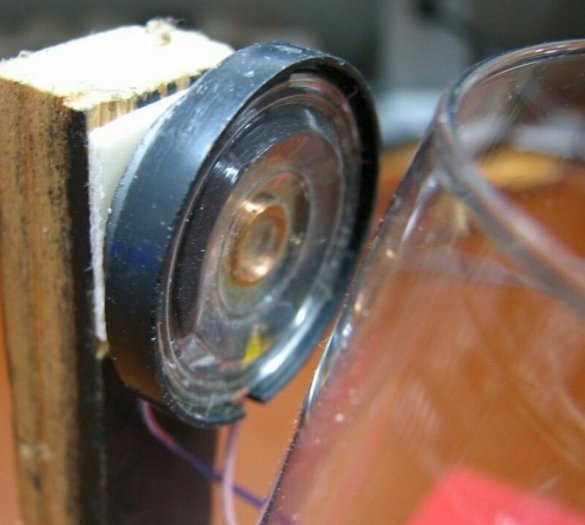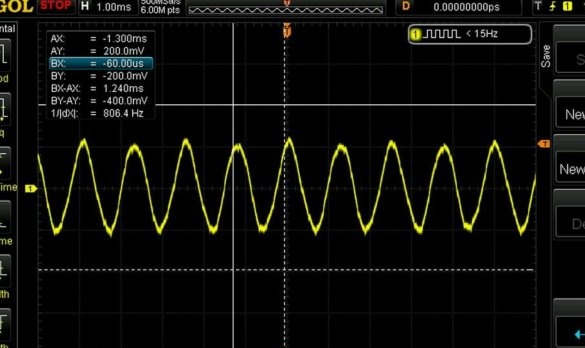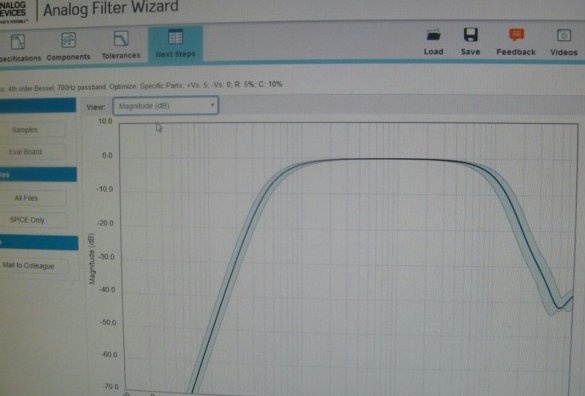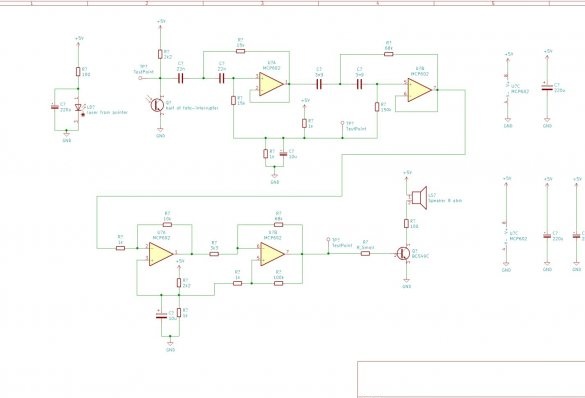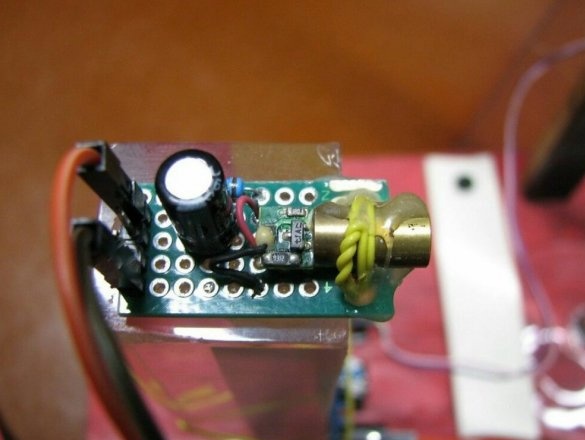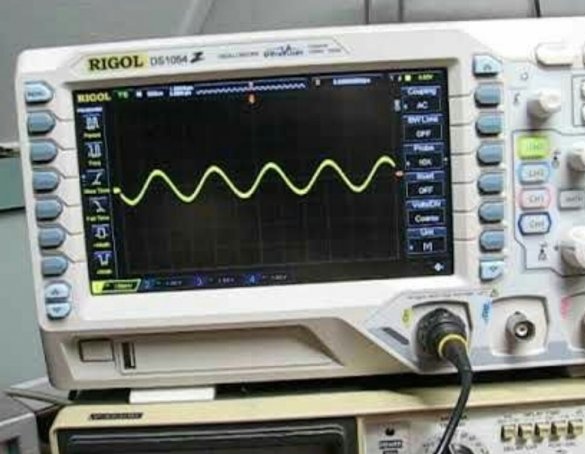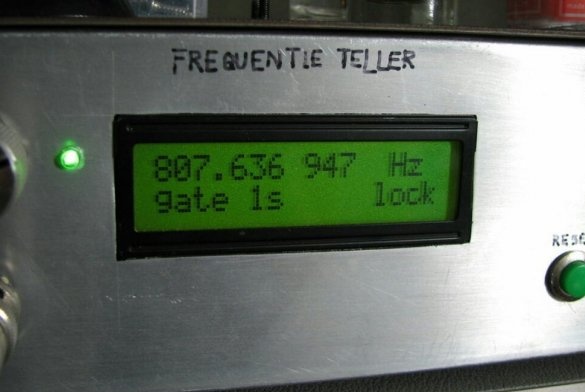The author of Instructables under the nickname WilkoL clearly shows how hard it is to stop when you start experimenting with something interesting. He had already made a tuning fork generator and a clock based on it, and now he decided to use a glass as a frequency-setting element, the resonance properties of which are well known. It is also well known that with a loud voice or a powerful audio system, you can make a glass crack or even burst if the frequency of the emitted oscillations coincides with the resonant one. But the master managed with a miniature dynamic head connected to a low-power amplifier, so that the object of the proposed experiment will not do anything bad. Most often, such a head with a plastic diffuser, as in the photo below, is found in toys.
An optocoupler with an open optical channel consists of a laser:
And a phototransistor:
We return to the KDPV, where it is shown how the laser, the glass, the dynamic head (blocked by the glass) and the phototransistor are located relative to each other:
At first, the master chose a green laser, since the phototransistor is most sensitive to infrared radiation, and the green light in such a laser is obtained from infrared by isolating the second harmonic in a crystal that has nonlinear properties. A cheap green laser does not have a filter that is opaque to infrared rays, which requires some caution when handling such a laser. But infrared was so intense that next to homemade it was scary to be at the risk of catching the reflected invisible ray with the eye. Therefore, the master changed the laser to the cheapest, low-power red, and the phototransistor, as it turned out, is sensitive to red light.
Using an oscilloscope, the master revealed two resonances: glasses at a frequency of about 800 Hz and legs at a frequency of about 100 Hz.
The master does not need the second of these resonances, so he designs the HPF in the Analog Filter Wizard web site of Analog Devices:
And simulates its frequency response:
Having assembled such a filter, the master again takes up the oscilloscope and makes sure that only oscillations with the resonance frequency of the glass pass, but not the legs. Such a filter delays the 50-Hz tip from the network all the more.
The master proceeds to the final stage of the experiment - collects the entire generator completely according to this scheme:
Here lies the same scheme in PDF. The following shows what the result of its assembly in iron looks like:
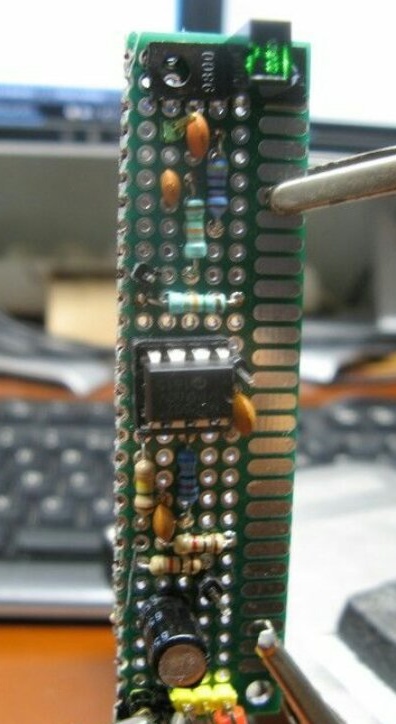
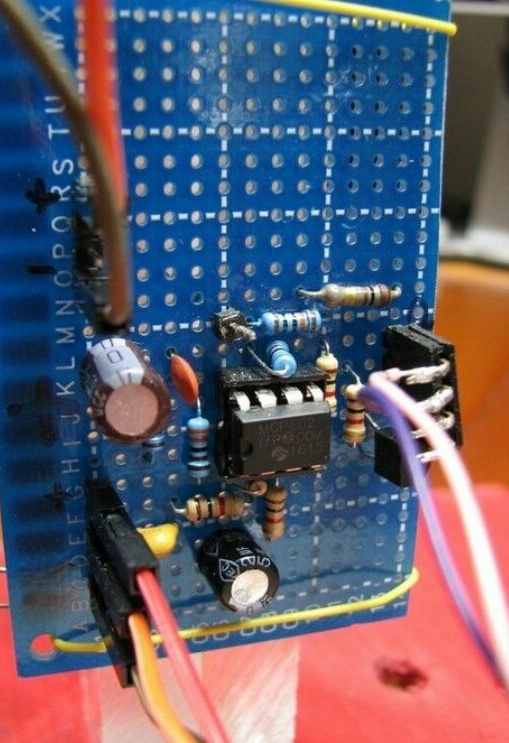
The device has two control points: TP1 and TP2, where TP means test point.You can connect an oscilloscope, a frequency meter to them, as well as in further experiments - and a clock for which the generator will serve as a clock. As can be seen in the following photo, the finished generator is excited and produces a pure sinusoid:
Before applying to the watch a sinusoid, of course, will have to be turned by the shaper into a rectangle. Unlike the tuning fork, the generator is very sensitive to the relative position of the glass and the elements of the optocoupler. A small shift - and the generation stops. But it is worth achieving it - and you can measure the frequency with a frequency meter:
And if the tuning fork is not invented by WilkoL, then the “box” when he makes them will be his invention, which no one has done before him.


